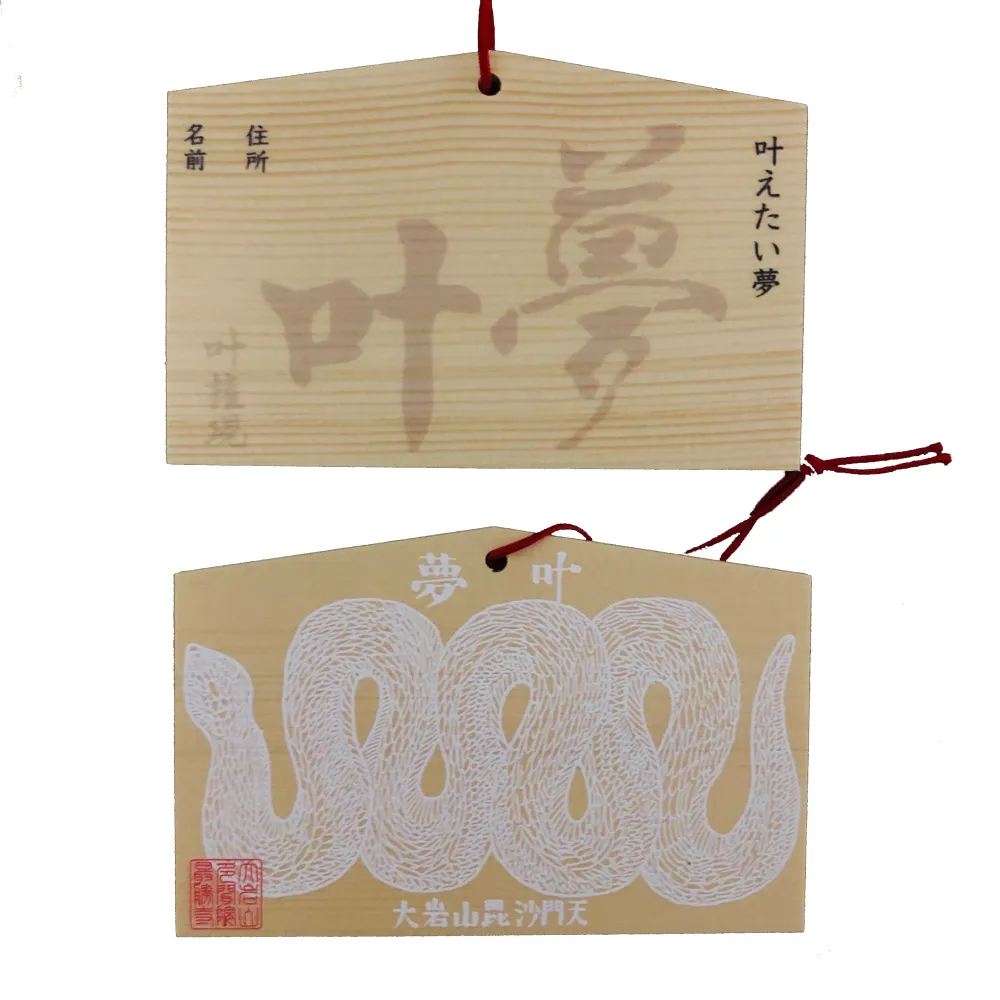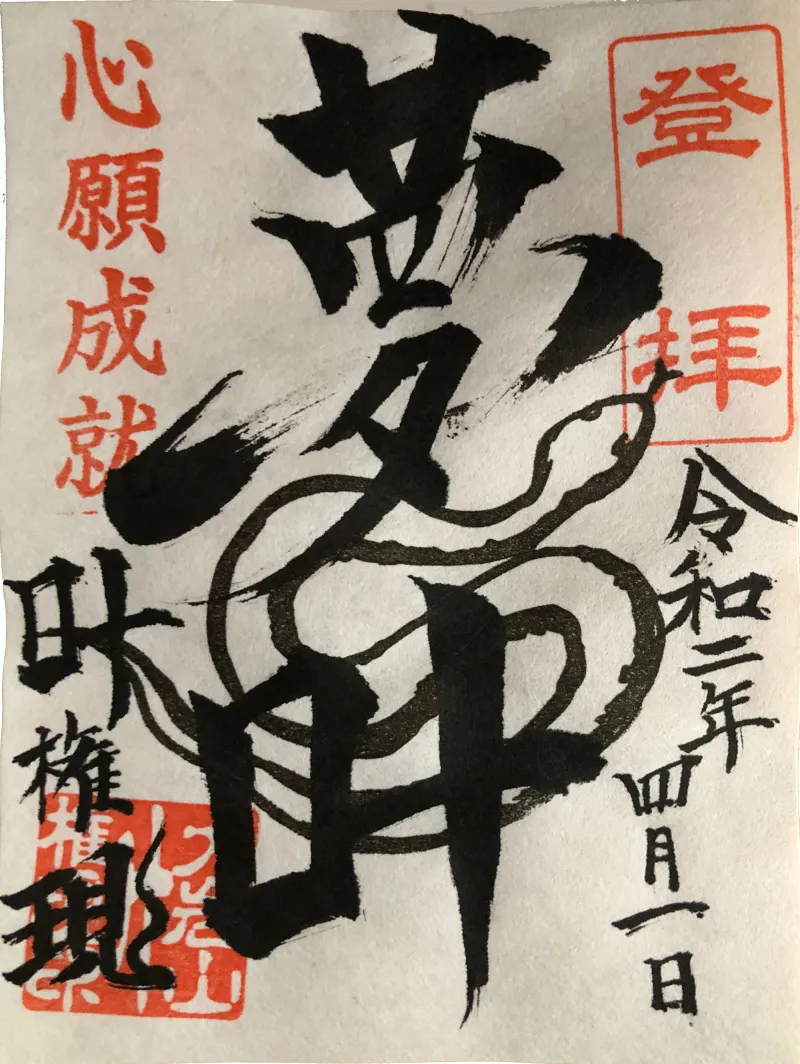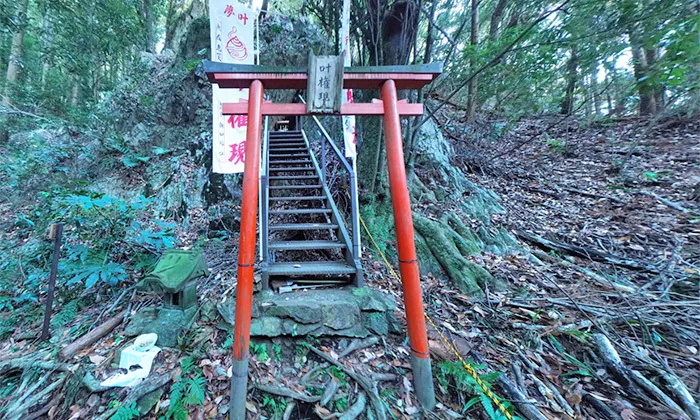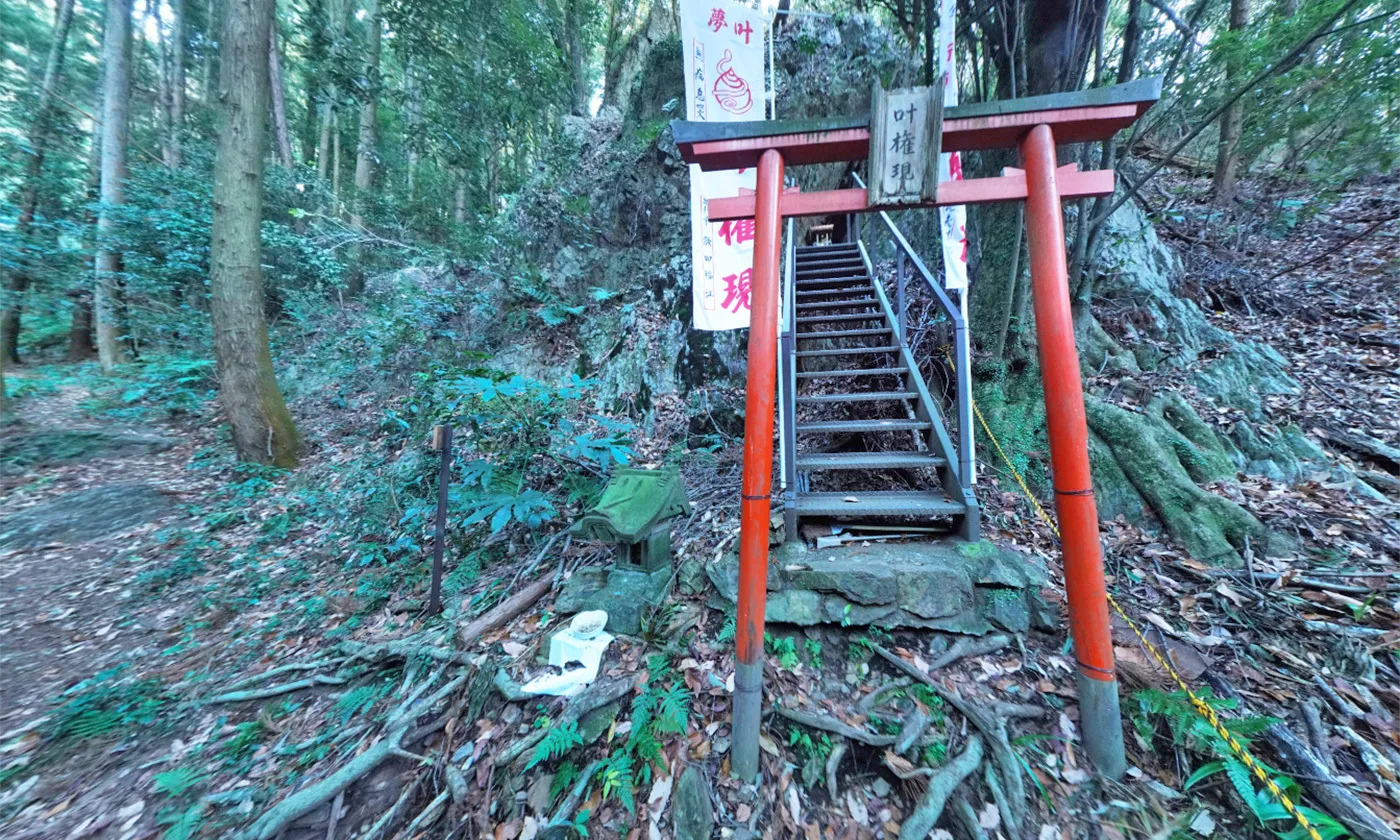Kano Gongen
Kano Gongen's benefits: a power spot for good fortune and money, a shrine where wishes come true
"Yumekanau" (dream come true) ema at Kano Gongen, a shrine where wishes come true

On the reverse side are the words "Yume kanau" (dream come true) and "Kano Gongen" written by the chief priest.
It is available at the main temple and the temple office of Oiwasan Bishamonten.
If you are too far away to visit, we can mail it to you. Please apply from the Inquiries page.
How to use the "Yume Kanau" ema at Kano Gongen, a shrine where wishes come true
Red seal for "Yume Kanau" at Kano Gongen, a shrine where wishes come true.

The red seal of Kano Gongen, a wish-fulfilling shrine, is called "Yume Kanau" Goshuin, with the word "Yume Kanau" or "Dream Fulfillment" written in brush strokes and a white snake stamped on it. Kano Gongen's "Yume Kanau" red seal is available at Oiwasan Bishamonten on the first day of each month. During the New Year, a limited number of red seals are given on each of the three days of the New Year.
Please let the receptionist know your wish for the red seal, which is a prayer for the fulfillment of your heartfelt wishes.
Please ask at the main hall of Bishamonten (Mt. Oiwa Bishamonten).
Awarding fee: 500 yen
Oiwasan Bishamonten, the oldest Bishamonten in Kanto, and Kano Gongen
Location: Midway up Mt. Oiwa, a sacred mountain in the Kanto region, in the precincts of Oiwasan Bishamonten
Kano Gongen's Power Spot for Money and Luck Video
Kano Gongen VR Tour to make your wishes come true
- Click on the image above to see the scenery starting from Kano Gongen
- Clicking on the link displayed above the spherical panoramic photo will take you to spherical panoramic photos of the sky and the ground of the mountain path of Mt. Oiwa, the precinct of Saishoji-temple and Oiwasan-Bishamonten , and tourist spots scattered around Ashikaga City.
- By operating the buttons located at the top of the screen, you can rotate left/right/up/down, enlarge/reduce the screen, switch VR mode, display full screen, etc.
- VR mode provides a three-dimensional experience when viewed with VR goggles.
- The map display at the top left of the screen can be enlarged or reduced, and the map can be switched, allowing you to check the registered spherical panoramic photo location, viewing direction, and visible range.





Kano Gongen is said to have been a shrine enshrined by Ashikaga Yasui, grandson of Ashikaga Yoshikane, founder of Hanna-ji Temple.
Ashikaga Yasunari was a devout believer in Shintoism and Buddhism, and is said to have been especially devoted to Oiwasan Bishamonten. Although the content of his prayers is not known, Yasunaga made a pilgrimage to the shrine to pray for 100 days. On the ninety-ninth day, he passed by Gyokihei and saw a white snake emerging from a rock, which he thought was a sign that his wish had been fulfilled.
As the name suggests, Kano Gongen is a shrine where wishes come true.